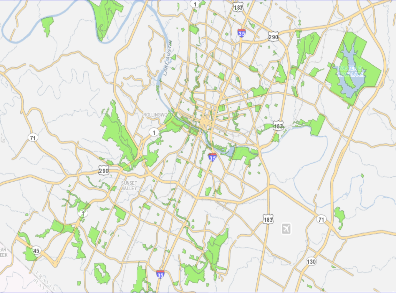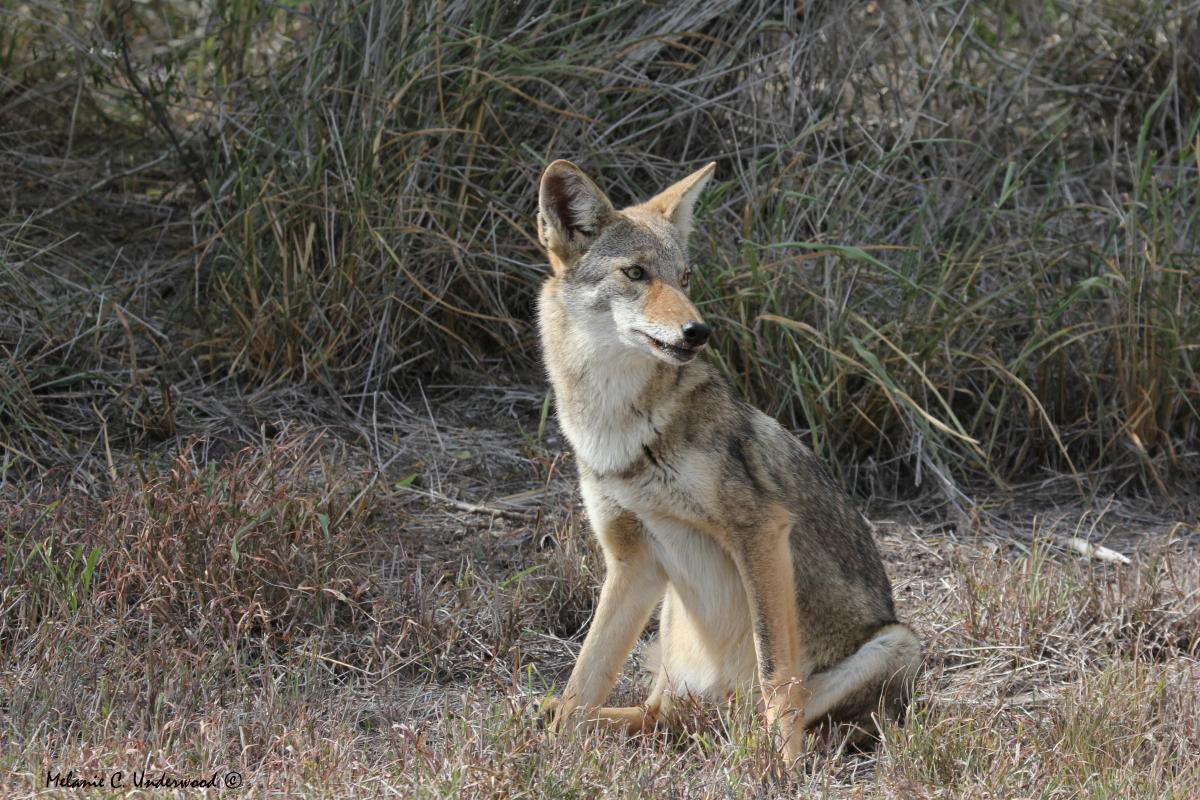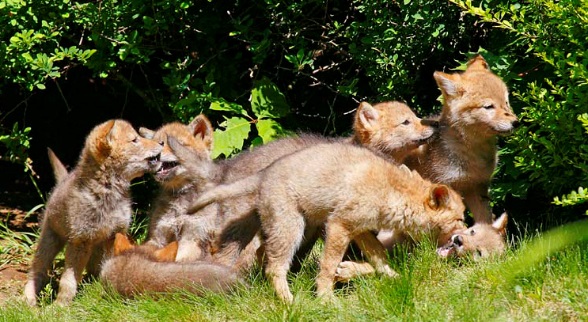Coyotes and Austin’s Wildland Urban Interface


Austin's Wildland Urban Interface (WUI) is dispersed throughout the city.
Attracting wildlife to residential backyards can be a rewarding experience. Since the City of Austin is a Certified Wildlife Habitat with the National Wildlife Federation, Austinines are passionate about creating habitat in the Wildland Urban Interface (WUI). As Austin grows, creating and preserving wildlife habitat is critical, but as the city expands and the temperatures (and mating season) heat up in late spring and early summer; this is prime time to see some of Austin’s larger native predators.

Photo Credit: Melanie on Flickr
Canis latrans, Austin’s resident coyote is the ultimate urban adaptor. They look similar to a medium sized dog, weighing in at 15 to 36 lbs, though they appear somewhat larger due to their often bulky fur and downturned tail. Their natural diet consist mostly of small rodents, insets, birds, lizards as well as fruit and berries. Needless to say they play a critical role in rodent population control. In the WUI however, coyotes also find abundant food in unsecured garbage cans, pet food, and food debris left in parks and open public spaces.
Coyotes Through The Seasons


Left Photo Credit: Robert Nunnally on Flickr (left)
Seasonally, coyotes spend their winter and early spring months in monogamous pairs. By late spring and early summer, the alpha female and male create dens to rear a litter of pups. Once mature some coyotes will leave their litter searching for mates beginning the cycle over. During the late spring and early summer (roughly April through August) both male and female coyotes search for food in their home terrain to feed their brood of hungry pups.
Although coyotes generally avoid humans, as Austin’s city limits encroach more into the coyote’s native habitat, they can often be seen, particularly around dusk or dawn. When coyotes are spotted it is important to notices their behavior and location, and if they seem to be a threat to human populations. Coyotes that become too familiar with human’s can lead to negative interactions. If a coyote is spotted moving through an area away from humans this is typically normal behavior. If coyotes are spotted adjacent to residential areas, frequently entering yards, playscapes or other areas frequented by humans, there are some tactics that deter the habituation of coyotes to human areas.
Tips to Avoid Negative Interactions with Coyotes
- Do not feed coyotes
- Monitor small pets outdoors
- Secure pet food indoors and be sure to clean up scraps if feeding outdoors
- Keep Wildlife Habitat Yards well maintained
- Clean up fallen bird seeds from bird feeders
- Keep brush well maintained to eliminated hiding spaces
- Keep dogs or cats on leashes no longer than 6 ft (especially in parks and greenbelts)
- Keep dogs out of nature preserves—these are natural habitats and den sites for coyotes
- Discourage coyotes from frequenting an area by using hazing techniques
- Call 3-1-1 to report concerns
Deter Coyote Interactions
Hazing or vexing is a technique used to scare coyotes away from an area. Coyote hazing has proven more effective and more humane than killing or relocating. This method conditions the coyote to form negative associations with humans and sensitive areas such as lawns and playscapes. Here are some tips to on vexing or hazing coyotes to avoid future interactions:
- Make eye contact, yell and wave your arms. You want the coyote to know the behavior is directed at it. Waving your arms will make you seem bigger.
- Use noisemakers such as whistles, air horns, a “shaker” can full of small rocks (or something similar), or bang something like pots and pans together.
- If the coyote does not leave immediately, throw non-edible objects near it. You can use something like small rocks, sticks or tennis balls. Remember, the goal is not to hurt the coyote, you’re trying to get it to leave and associate humans with unpredictable, “scary” behavior.
- Spray the coyote with a water hose, water guns or spray bottles. You can also use a mixture of water and vinegar, pepper spray or bear repellant.
- If the coyote does not leave after escalating hazing efforts, maintain eye contact and back away slowly. Notify 311 immediately.
For more information and steps to deter coyote’s from frequenting your home and neighborhood visit the City of Austin Animal Services webpage. To read more about the City of Austin’s policy on Coyote Management review Resolution No. 20141120-088.
LaJuan D. Tucker is a City of Austin Natural Resource Park Ranger who co-coordinates the Wildlife Austin Program.
The Wildlife Austin program educates the public on using native plants and sustainable gardening to attract Austin’s native wildlife population. The Wildlife Austin program coordinates the restoration of habitat on appropriate parkland and open spaces through engage volunteers in the community. LaJuan also speaks to school groups, communities and home owners about the value of Keeping Austin Wild.
